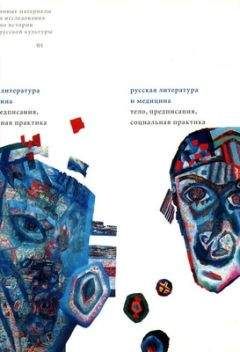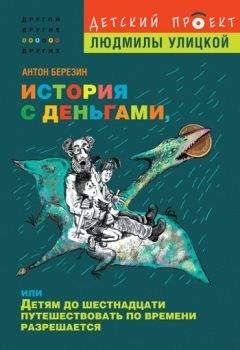ЕВА. История эволюции женского тела. История человечества - Бохэннон Кэт
Slonecker, E.M., Simpson, E.A., Suomi, S.J., and Paukner, A. (2018), Who’s my little monkey? Effects of infant-directed speech on visual retention in infant rhesus macaques. Developmental Science, 21, e12519. doi:10.1111/desc.12519. Smaers, J. B., Gуmez-Robles, A., Parks, A. N., and Sherwood, C. C. (2017). Exceptional evolutionary expansion of prefrontal cortex in great apes and humans. Current Biology, 27(5), 714–720. doi:10.1016/j.cub.2017.01.020.
Smaers, J. B., Steele, J., Case, C. R., Cowper, A., Amunts, K., and Zilles, K. (2011). Primate prefrontal cortex evolution: Human brains are the extreme of a lateralized ape trend. Brain, Behavior and Evolution, 77(2), 67–78. doi:10.1159/000323671.
Smith, C. (2014). Estimation of a genetically viable population for multigenerational interstellar voyaging: Review and data for project Hyperion. Acta Astronautica, 97, 16–29. doi:10.1016/j.actaastro.2013.12.013.
Smith, E. R., Oakley, E., Grandner, G. W., Ferguson, K., Farooq, F., Afshar, Y., et al. (2023). Adverse maternal, fetal, and newborn outcomes among pregnant women with SARS-CoV-2 infection: an individual participant data meta-analysis. BMJ Global Health, 8(1), e009495. doi:10.1136/bmjgh-2022-009495. Smith, T. M., Tafforeau, P., Reid, D. J., Pouech, J., Lazzari, V., Zermeno, J. P., et al. (2010). Dental evidence for ontogenetic differences between modern humans and Neanderthals. Proceedings of the National Academy of Sciences, 107(49), 20923–20928. doi:10.1073/pnas.1010906107.
Smith, T., Laitman, J., and Bhatnagar, K. (2014). The shrinking anthropoid nose, the human vomeronasal organ, and the language of anatomical reduction. The Anatomical Record, 297. doi:10.1002/ar.23035.
Smuts, B. B. (1985). Sex and Friendship in Baboons. Hawthorne, N.Y.: Aldine Publishing Co.
Smuts, B. B., & Smuts, R. W. (1993). Male aggression and sexual coercion of females in nonhuman primates and other mammals: evidence and theoretical implications. Advances in the Study of Behavior, 22(22), 1–63.
Snow, S. S., Alonzo, S. H., Servedio, M. R., and Prum, R. O. (2019). Female resistance to sexual coercion can evolve to preserve the indirect benefits of mate choice. Journal of Evolutionary Biology, 32(6), 545–558. doi:10.1111/jeb.13436. Snyder-Mackler, N., Alberts, S. C., and Bergman, T. J. (2012). Concessions of an alpha male? Cooperative defence and shared reproduction in multi-male primate groups. Proceedings of the Royal Society B: Biological Sciences, 279(1743), 3788–3795. doi:10.1098/rspb.2012.0842.
Soares, C. N., and Zitek, B. (2008). Reproductive hormone sensitivity and risk for depression across the female life cycle: a continuum of vulnerability?. Journal of Psychiatry & Neuroscience, 33(4), 331–343.
Sohrabji, F. (2007). Guarding the blood-brain barrier: a role for estrogen in the etiology of neurodegenerative disease. Gene Expression, 13(6), 311–319. doi:10.3727/000000006781510723.
Solnit, R. (2013). Mysteries of Thoreau: Unsolved. Orion, May/June 2013. Sorge, R. E., Mapplebeck, J., Rosen, S., Beggs, S., Taves, S., Alexander, J. K., et al. (2015). Different immune cells mediate mechanical pain hypersensitivity in male and female mice. Nature Neuroscience, 18(8), 1081–1083.
Sorokowski, P., Karwowski, M., Misiak, M., Marczak, M. K., Dziekan, M., Hummel, T., and Sorokowska, A. (2019). Sex differences in human olfaction: a meta-analysis. Frontiers in Psychology, 10, 242.
Spelke, E. S. (2005). Sex differences in intrinsic aptitude for mathematics and science?: A critical review. American Psychologist, 60, 950–958. doi:10.1037/0003– 066X.60.9.950.
Spencer, J. (2016). The challenges of Ranger School and how to overcome them. Modern War Institute at West Point, April 12, 2016. mwi.usma.edu.
Spoor, F., Leakey, M. G., Gathogo, P. N., Brown, F. H., Anton, S. C., McDougall, I., et al. (2007). Implications of new early Homo fossils from Ileret, east of Lake Turkana, Kenya. Nature, 448(7154), 688–691.
Sramek, J. J., Murphy, M. F., and Cutler, N. R. (2016). Sex differences in the psychopharmacological treatment of depression. Dialogues in Clinical Neuroscience, 18(4), 447–457. doi:10.31887/DCNS.2016.18.4/ncutler.
St John, J., Sakkas, D., Dimitriadi, K., Barnes, A., Maclin, V., Ramey, J., et al. (2000). Failure of elimination of paternal mitochondrial DNA in abnormal embryos. The Lancet, 355(9199), 200. doi:10.1016/S0140-6736(99)03842-8.
St-Onge M. P. (2010). Are normal-weight Americans over-fat?. Obesity, 18(11), 2067–2068. doi:10.1038/oby.2010.103.
Stanicˇ, B. (2023). Gender (dis)balance in local government: how does it affect budget transparency? Economic Research-Ekonomska Istraћivanja, 36(1), 997–1014. doi:10.1080/1331677X.2022.2081232.
Stansfield, E., Fischer, B., Grunstra, N., Pouca, M. V., and Mitteroecker, P. (2021). The evolution of pelvic canal shape and rotational birth in humans. BMC Biology, 19(1), 224. doi:10.1186/s12915-021-01150-w.
Steele, J. (1999). Palaeoanthropology: Stone legacy of skilled hands. Nature, 399(6731), 24–25.
Steele, J., Clegg, M., and Martelli, S. (2013). Comparative morphology of the hominin and African ape hyoid bone, a possible marker of the evolution of speech. Human Biology, 85(5), 639–672.
Steele, T. E. (2010). A unique hominin menu dated to 1.95 million years ago. Proceedings of the National Academy of Sciences, 107(24), 10771–10772. doi:10.1073/ pnas.1005992107.
Steiper, M. E., and Young, N. M. (2006). Primate molecular divergence dates. Molecular Phylogenetics and Evolution, 41(2), 384–394.
Stevens, E. E., Patrick, T. E., and Pickler, R. (2009). A history of infant feeding. The Journal of Perinatal Education, 18, 32–39. doi:10.1624/105812409x426314. Stewart, J. R. (1997). Morphology and evolution of the egg of oviparous amniotes. In S. S. Sumida and K. L. M. Martin (eds.), Amniote Origins, 291–326. San Diego: Academic Press. doi:10.1016/B978-012676460-4/50010-X.
Stinson, L. F., Boyce, M. C., Payne, M. S., and Keelan, J. A. (2019). The Not-so-Sterile Womb: Evidence That the Human Fetus Is Exposed to Bacteria Prior to Birth. Frontiers in Microbiology, 10, 1124. doi:10.3389/fmicb.2019.01124.
Stockman, J. K., Hayashi, H., and Campbell, J. C. (2015). Intimate Partner Violence and its Health Impact on Ethnic Minority Women [corrected]. Journal of Women’s Health, 24(1), 62–79. doi:10.1089/jwh.2014.4879.
Storlazzi, C. D., Gingerich, S. B., van Dongeren, A., Cheriton, O. M., Swarzenski, P. W., Quataert, E., et al. (2018). Most atolls will be uninhabitable by the mid-21st century because of sea-level rise exacerbating wave-driven flooding. Science Advances, 4(4), eaap9741. doi:10.1126/sciadv.aap9741.
Strassmann, B. I. (1996). The evolution of endometrial cycles and menstruation. The Quarterly Review of Biology, 71(2), 181–220. doi:10.1086/419369.
Strassmann, B. I. (1997). The biology of menstruation in Homo Sapiens: Total lifetime menses, fecundity, and nonsynchrony in a natural-fertility population. Current Anthropology, 38(1), 123–129. doi:10.1086/204592.
Strenze, T. (2007). Intelligence and socioeconomic success: A meta-analytic review of longitudinal research. Intelligence, 35(5), 401–426.
Suarez, S. S., and Pacey, A. A. (2006). Sperm transport in the female reproductive tract. Human Reproduction Update, 12(1), 23–37.
Subramanian, S. (2020). A Dominant Character: The Radical Science and Restless Politics of J. B. S. Haldane. New York: W. W. Norton.
Suntsova, M. V., and Buzdin, A. A. (2020). Differences between human and chimpanzee genomes and their implications in gene expression, protein functions and biochemical properties of the two species. BMC Genomics, 21(7), 535. doi:10.1186/s12864-020-06962-8.
Surovell, T., Waguespack, N., and Brantingham, P. J. (2005). Global archaeological evidence for proboscidean overkill. Proceedings of the National Academy of Sciences, 102(17), 6231–6236.




